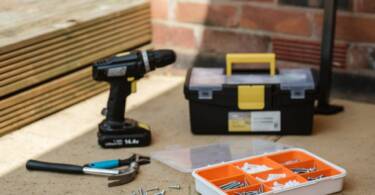In every day life Karen Halliwell, 48, is a wife, a mother of two, and a visual effects artist in the film industry.
In every day life Karen Halliwell, 48, is a wife, a mother of two, and a visual effects artist in the film industry. But twice a month she leaves her family in Surbiton to become Angélique Parfait. She wears her red lipstick and pulls-up her stockings to put on a burlesque show. What started as a hobby and a fascination for the 1950s’ look has turned into a passion for feathers and tassels. “I started taking lessons at Burlesque Baby in Covent Garden and found I really liked the dancing as well. I didn’t really plan on performing but after doing the graduation show, I found I was hooked,” says Karen.
Surbiton’s queen of striptease Phyllis Dixey had a scandalous career as a fan dancer during the 40s and 50s. She was again raising eye brows when English Heritage decided to attribute her a commemorative plaque at Wentworth Court, Surbiton. But she would be proud of the new generation of women who continue the burlesque tradition around Surrey. In her days, she entertained mostly male audiences and British troops during the war. Today burlesque is more about women and for women. “At the shows I do it’s about 75 per cent women, 25 per cent men. I think some of the shows in the City like Proud Cabaret are more male oriented, but for the most part it’s women who like burlesque,” says Karen. Even her husband is not invited to watch her numbers that go on in Streatham and Acton. “He came along to my graduation and was quite proud of me I think. As a rule I don’t like him coming along as I am more nervous if he is there,” she explains.
Miranda Llewellyn, 55, runs the Academy of Burlesque, a local school in Kingston and its area. For this ex-dancer burlesque is all about femininity: “It gives you permission to be a girl which I think in this day and age, with the amount of suffering women have got on their plate, it gets lost along the way. I love the feminine side of it,” she says. The school that has been running for a year has so far had students between 16 and 72 years old. “I want them to feel good about themselves, and they do. I will have someone who comes to take a class and they will walk out an inch taller, always,” says Miranda. For Karen burlesque offered her an escape from the daily routine: “I am lucky enough to have two lovely children, and although being a mum is great you can find yourself becoming just a mum, and quite a frumpy one at that. I wanted to do something glamorous and self indulged.”
Today burlesque is in the mainstream with shows on nearly every night in London but it still comes with some controversy. Dita Von Teese one of the leading celebrity performers of burlesque proudly calls herself a stripper. Some disagree with her: “If she learnt her history of dance, she would know that originally there was a group of dancers called the British Blondes who went to the States, and the Americans picked it up and turned it in to striptease,” says Miranda. That’s also what the debate around the commemorative plaque for Phyllis Dixey is about: What is she to be remembered as? The proposed phrasing for the plaque is striptease artist but the dancer’s family and residents of Wentworth Court object and would prefer her to be remembered as a burlesque dancer. “I personally don’t have any problem with the wording striptease, as in striptease the emphasis is really on the tease. I think it’s a world away from modern day lap dancing,” says Karen. The shows she puts on never involve complete nudity. At the most she strips down to her knickers and nipple tassels.
One of the reasons burlesque is under the spotlight again could be the bad economy. In America burlesque was most popular in the late 1860s during the Long Depression and in the late 1920s during the Great Depression. That’s what Miranda had in mind when she opened the Burlesque Academy of Dance: “Burlesque has an interesting sort of history and your find that it’s popular in times of economic recession. My feeling was that everyone is running around, everyone is miserable and burlesque is fun and that’s the whole point of it.” It is also all about the art, the art of tease: “Getting a corset off in a timely, attractive, fashion is quite a science and can take an awful lot of practice,” explains Karen. Burlesque gives women confidence in themselves and their body and allows them to have fun with it. “It’s very creative and glamorous. I think everyone needs some feathers and diamonds to cheer them up now and then,” says Karen.
Burlesque often crosses the path of the vintage movement as both look back with nostalgia to the mid-twentieth century fashion and life-style. “It seemed like a much nicer time, where women were women and men were men, and people had manners and much more respect for each other,” says Lucy Williams, 22, vice president communications at Kingston University Student Union. For her vintage is not just the way she dresses: “My obsession goes past my outfits and into my furniture at home, the books I read and even the way I expect to be treated.” For Miranda, who compares modern nylon tights to a cage, the vintage style just makes life easier: “The six strap is the only way to go,” she told one of her girls. “Normally with a suspender you’ve got one at the front and one at the back and your bum looks disgusting. But the six strap will fit nicely on the waist. And you can get a 12 strap if you really want to go overboard,” she explains. As she talks of her favourite burlesque accessory, you can just imagine how girly she is: “I think my favourite accessory is probably gloves, because you can be so naughty with gloves,” she giggles.








